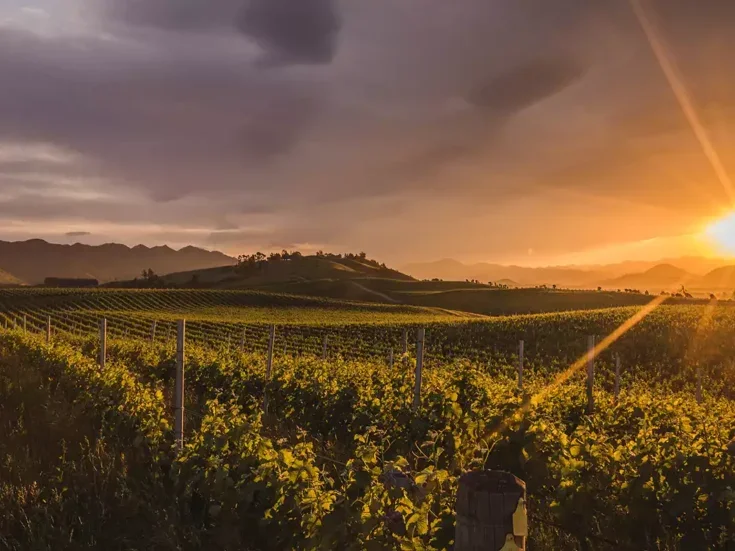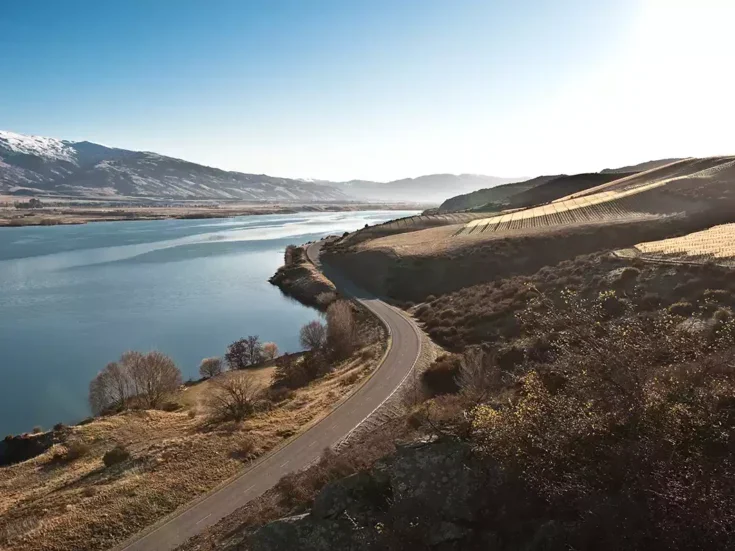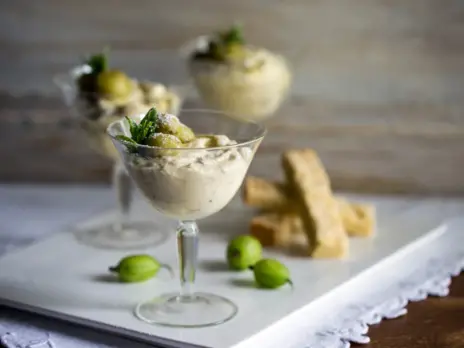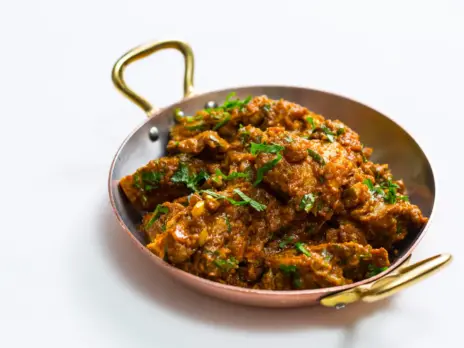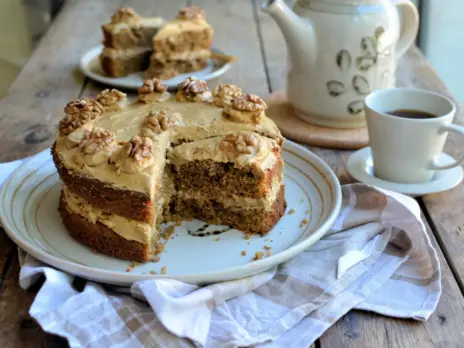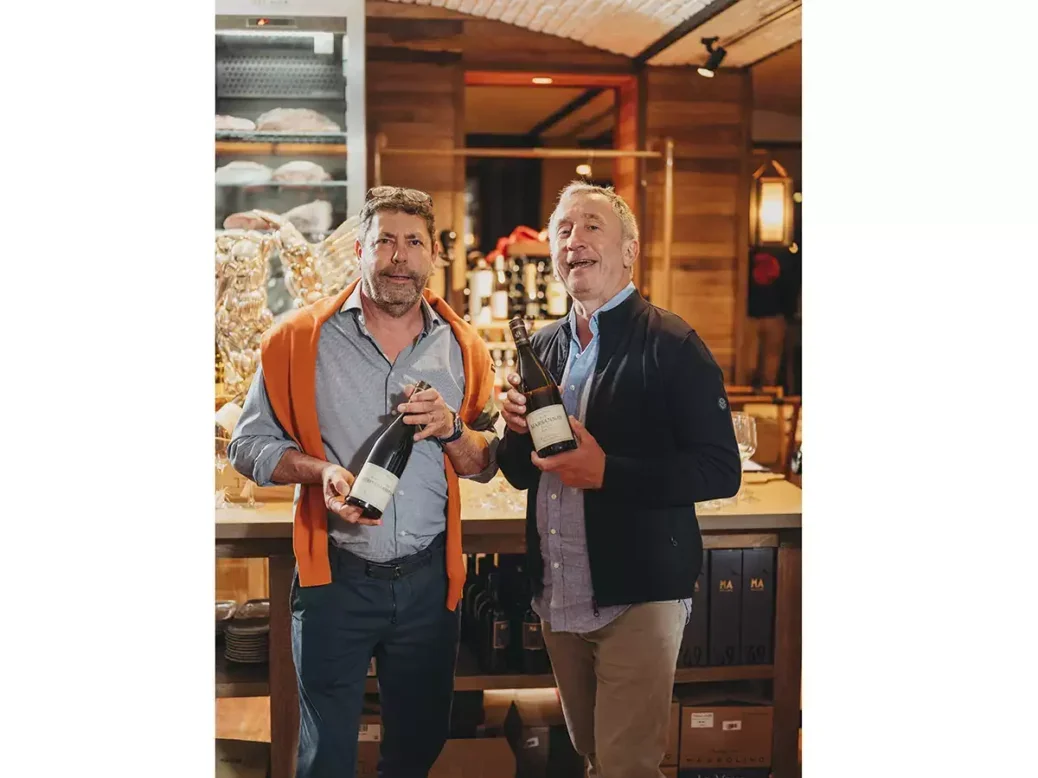
A paulée in Mauritius. Yes, that’s Mauritius, not Meursault. Would I like to go? A swift airport turnaround from “Sicily En Primeur.” No problem. I could write about Carricante while dipping my toes in the Indian Ocean.
A warm welcome at the airport included a box of macarons, should I feel peckish during the transfer to the Constance Prince Maurice where a week of “exquisite wine dinners with world-renowned winemakers” awaited me. Winemakers had winged in from South Africa, the Loire, Burgundy, and Wagram for the event, which would culminate in a paulée on the Saturday night during which magnums of their wine would be auctioned.
So, let’s set the scene. A tropical paradise, polished. Manicured gardens, azure waters, swaying coconut palms—the latter perhaps as much a result of those wine-pairing dinners as any tropical breeze. Sun, sand, and a private lagoon laid on with impeccable taste.
The Prince Maurice is part of the Constance group of five-star hotels scattered across the Indian Ocean. It is more boutique hotel than resort; the colonial thatched suites and villas, some on stilts, are discreetly tucked between those lissome trees. All is tranquil and dreamily distant from my customary haunt of a cold, damp cellar. Blinking in the sunlight, I wasn’t complaining.
The Constance group take wine seriously, employing and meticulously training 100 sommeliers, 50 in Mauritius alone. The proceeds of the auctioned lots would enable a few of the most talented to visit winemaking regions.
I arranged to have a chat with Constance’s Head of Wine, Jérôme Faure, but all in good time. The wellness center and spa beckoned. After an hour of robust pummeling and kneading by my masseuse, Vanila, I felt relaxed and restored and, on returning to my room, caught sight of the macarons. Now I am partial to these feather-light biscuits. Crisp and moist, these ones were perfectly balanced. And so, on this delicate cloud, I embarked upon my culinary journey. I am no food critic, but when presented with fine ingredients and skilful cookery, I have a palate primed to appreciate them.
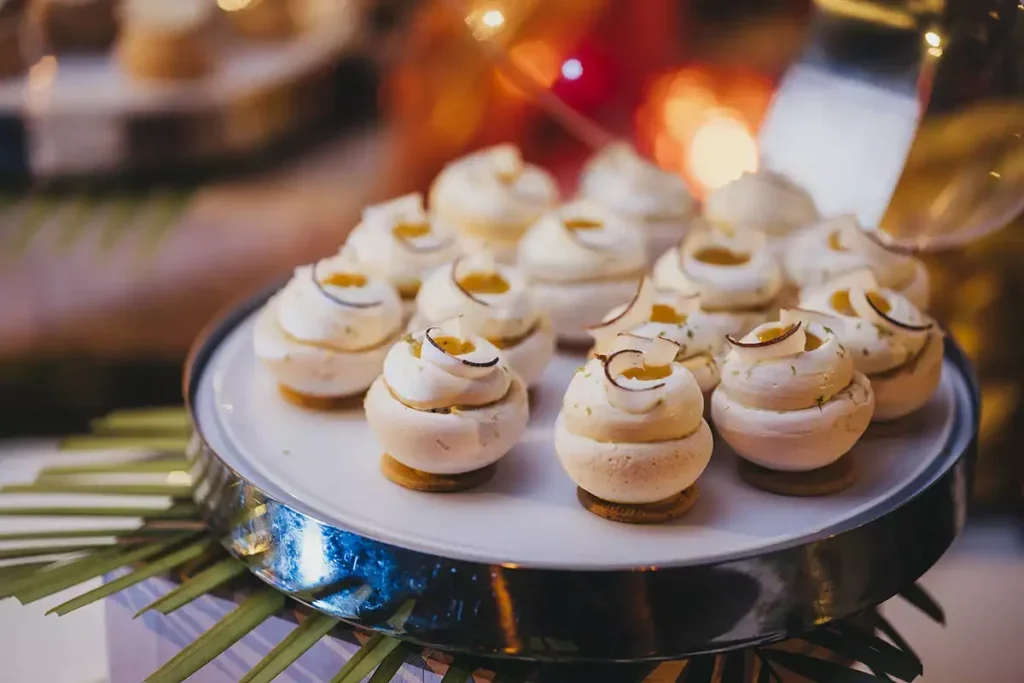
And my goodness, the seafood was excellent and varied. It is possible to eat healthily here, but after a few days the will drains away. Remedial recourse could be found in the gym, which I visited religiously each morning before replenishing with a sumptuous breakfast. The gym is surprisingly well-stocked with fitness machines. There’s only one cross-trainer, but no one was fighting me for it.
Over a glass of Charles Heidsieck in the Lotus Bar, Jérôme Faure looked back to 2005, when he began working for Constance hotels. “The big issue in the Indian Ocean at that time was the transport of wine. I started importing directly using refrigerated containers. We fill 40 a year now.” This has an effect on the quality, range, and price of the wine available on the lists in Constance’s various restaurants. “We can manage and select our portfolio.” Accompanied by his head sommeliers, Jérôme visits Europe for a fortnight every year to make his selection. The Prince Maurice has 2,000 references and the savings made on the importers’ margins are passed on to the guests. “Our wines are often half the price of other Mauritian hotels,” he told me. “Some guests come just for the wine.”
I had a look through the hefty wine list, in a loose-leaf binder, as it continually updated, and it is impressively wide-ranging. If any of the prices of the entry- and mid-level wines are half the price they are at other hotels, then I worry for the guests staying there—but I guess this is Mauritius.
At the top end, prices were keener. Clearly Jérôme takes a smaller margin on fine wine and the prices of older vintages were particularly attractive. “We don’t re-evaluate the prices of older vintages,” he admitted. When so many good restaurants sell immature fine wine, it’s a pleasure to see more mature vintages, and fairly priced to boot. The Prince Maurice wine list is well worth a forage, but many of the wines are distributed between Constance’s other hotels in Mauritius, the Seychelles, the Maldives, and Madagascar, so there’s a good chance you will find wines of interest there, too.
There is also a good range of wine by the glass, and one immediately caught my eye: Domaine Raveneau Montée de Tonnerre at $27 (€25). A bit of a bargain. Better still, if you go to the Blue Penny Cellar, you can “ask the sommelier” to select glasses of wines that don’t appear on the list and for which the chef will create special dishes for you.
During our conversation Jérôme made an interesting observation. “The humidity and atmospheric pressure in Mauritius emphasizes the alcohol and tannin, and this intensifies two to three days before it rains. I love elegant wine, but it’s also important to have them because of the effect of the conditions here.” He finds that wine from the Northern Rhône works particularly well—“and it’s not because I am from Crozes-Hermitage,” he adds.
Bernard Bouvier (Burgundy)
As befits a paulée, which nods to the most famous post-harvest celebration in Meursault, Bernard Bouvier had flown in from Gevrey-Chambertin to represent Burgundy. Bouvier’s “exquisite wine dinner” was held in the Blue Penny Cellar at Constance Belle Mare Plage. This larger hotel, neighboring Prince Maurice, is more of a resort and has a party vibe. Maybe it’s for those wishing to recapture their youth, but for the grown-ups it has the Blue Penny Cellar (and restaurant) with an impressive 3,000 references. The brisk temperature in the cellar is more conducive to wine aging than diners’ comfort, so tog up if you sup there.
Domaine René Bouvier is a new listing for Jérôme, who was looking for some less expensive Burgundy. Bouvier’s attractive Aligoté and Marsannay fit the bill. Although Bernard Bouvier makes his wine on an industrial estate below Gevrey, the family are from Marsannay, where he is president of the growers’ association and instrumental in the current application to the INAO for Marsannay premier cru. Bouvier is a reliable domaine that I have visited for many years.
The Marsannay Le Clos Monopole, from the tricky 2021 vintage, was deliciously sappy. It neatly cut through the richness of the veal carpaccio with parmesan and celery. The 2020 Gevrey-Chambertin Racine du Temps Très Vieilles Vignes had depth, intensity, and a svelte texture. As you would expect from vines on the Couchey side of the village, it combines structure with elegance. The roasted lamb saddle and chickpea ragout provided a good supporting act. The Blue Penny menu was the most conservative of the week but adeptly showcased the wine.
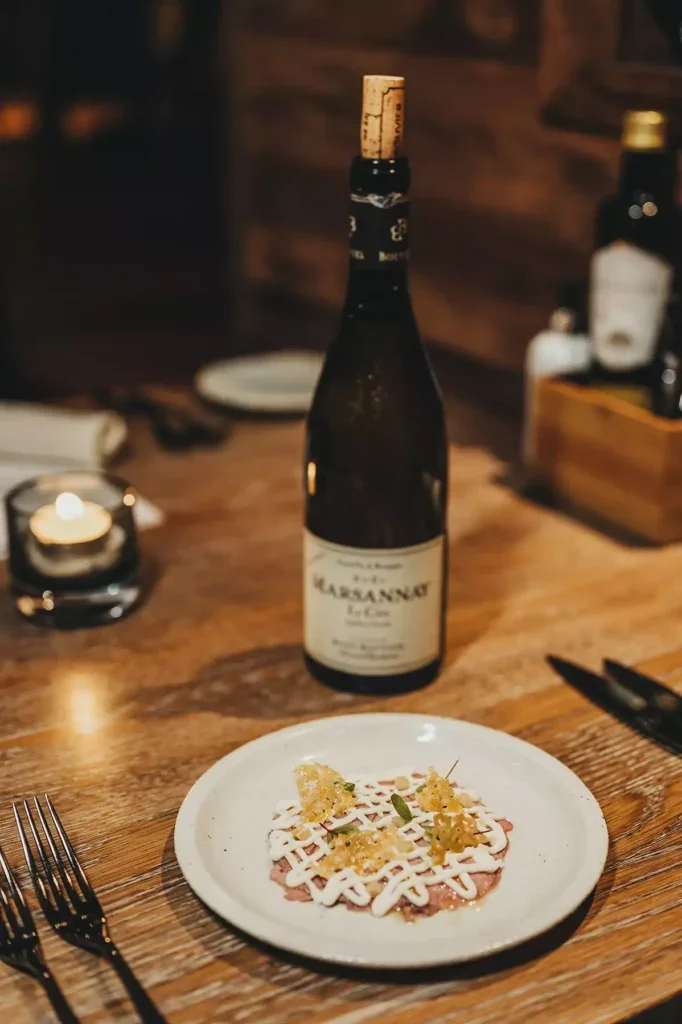
Bernard showed magnums of his 2008 Gevrey-Chambertin Racine du Temps at the paulée dinner. I felt it was a little lean, but it went down well at the event. I preferred his prancing Morey-St-Denis Rue de Vergy. From high on the slope, this is a favorite village climat of mine—tip-top in the excellent 2020 vintage.
On the second day there was a catamaran trip, with music, dancing, and a quantity of wine, I gather. I missed this party boat as a puritan work ethic kept me in my room. But in the event, it felt an effort to open my laptop, and my mind remained firmly closed. Only with arctic air-con did I manage to stay on top of emails, and as the week progressed the gray cells deteriorated to a foggy mush, where not a whit of creative imagination could be found. Was it the heat and humidity or the sybaritic environment? Probably a combination of the two.
Jonathan Pabiot (Loire)
The winemakers were accompanied by their families. From the Loire came the rather shy Jonathan Pabiot and his German wife, a tour de force in the marketing of this fourth-generation domaine in Pouilly-Fumé. It has been in the Pabiot family for four generations and now encompasses 21ha (52 acres) spread over five villages. Jonathan’s great-grandfather started with 2ha (5 acres) and one horse in 1973. The current stretch of 15km (10 miles) cannot be easy to work, but Jonathan has more than enough horsepower. We tried the Pabiot wines with an exciting seafood menu at Belle Mare Plage’s Lakaze Restaurant, which is breezily informal, with tables on the sand.
The yellowfin tuna carpaccio with palm heart, shellfish dressing, and citrus zest was among the most delicious dishes of the week. The Carnaroli risotto with squid ink, lobster medallions, and green asparagus tips in a cooking juice emulsion was almost as good. If the two wines accompanying these dishes had been reversed, the pairing might have been even better.
The 2023 Pouilly-Fumé Léon comes from clay and sandstone parcels. This more fruit-driven style would take asparagus in its stride, while the 2022 Luminance, my favorite among the wines Pabiot presented, is delicate, pure, and well-defined. It has a shimmering thread on the finish and would be brilliant with the clean cut of tuna carpaccio and citrus. Luminance is from a 1.5ha (3.7-acre) vineyard planted by Jonathan’s father and grandfather, on southwest-facing terraces beside the river. It lies below the Chemin de la Marée—once upon a time, the only path to the church. “It’s a really mineral soil with lots of oyster shells,” explains Jonathan.
The 2022 Eurythemie is a fuller, more firmly structured Pouilly-Fumé with a flinty profile, from Kimmeridgian soil. It chimed with the “land and ocean” chicken, king prawn ravioli, and lemon-grass juice. Another strong dish.
I don’t much like Sauvignon Blanc, but I do like Jonathan Pabiot’s terroir-driven wines. The dessert was served with a Pouilly-Fumé made without sulfur called Utopia. This off-piste wine lacked terroir expression and tasted oxidized. Jonathan finds it easy to sell, but I’m not sure he believes in it.
With so much time devoted to refined feasting (and recovery), I confess I saw little of the island, although an excursion to Port Louis for a street food tour was lightly informative about the history of the island, which has adopted the culinary traditions of various waves of migration from India and China, and incorporated them into their own creole cookery. The creole dishes are fragrant with spices and chili from Gujarat and, after partition, from Pakistan. My favorite was dholl puri, a yellow split-pea pancake with tomato, tamarind, and ginger filling, which looked unappealing, but was very tasty. We had a guide, but you really don’t need one. Just head for the market, where there are plenty of food stalls.
I also got out for an introductory golf lesson. This was very thorough. I had no idea golf was so technical. Constance has two 18-hole golf courses just a few minutes’ drive from the hotels. Moreover, if you like wine and golf, there is a special week at Le Prince Maurice that combines the two.
Domaine Ott (Austria)
Every morning the sommeliers assembled to listen to the visiting producers explain their estate and approach to winemaking. I sat in on these briefings, being particularly interested in the producers who were new to me, including Bernhard Ott who, in 2006, was a founding member of the biodynamic association Respekt. Domaine Ott’s vineyards of Grüner Veltliner spread across the border from Wagram into Kamptal ,where the Otts settled in 1888, drawn to the broad terraces of deep loess soil.
I particularly liked Bernhard’s single-vineyard (ried) wines. From a very old vineyard in the low-elevation Ried Stein, with loess over rock, the 2021 is fragrant with white peach; the body is fullish, glossy, and spicy, but balanced by an attractive bitterness. Ott crushes and then macerates thick-skinned Grüner-Veltliner for several hours—as many as 24 in a cold year when the pH is low—before pressing it in a basket press and fermenting the unsettled juice—which, he says, has “more influence of the terroir”—in 5,600-liter Stockinger foudres. Here it remains for two years, racked just once.

Ried Rosenberg was my favorite among Bernhard’s wines. From vines planted in 1956 on pure loess soil, this parcel has been owned by the family since 1889 and was first produced by Bernhard in 1989. It’s a dense wine with muscular minerality, a powerful finish, and the potential to age at least ten, and probably 20, years. The single vineyards are quite aggressive in youth and demand at least five years to mellow before opening them.
The wine-pairing dinner in Barachois Restaurant with Domaine Ott’s wine was the most successful of the week, when all four dishes were perfectly balanced with the wines served. Perhaps it was helped a little by the enchanting setting of this floating restaurant 0n the lagoon at Le Prince Maurice.
The chef was on fire that evening. The relatively simple, piquant Wagram Am Berg Grüner Veltliner was accompanied by a dish of seared scallop and cauliflower mousse with bergamot. Bergamot is strong in Earl Grey tea, but this was delicate and perfect with the lime, floral aromas of Am Berg.
The best food and wine combo of the week went to a dish of black cod with a white miso sauce partnered by 2021 Wagram Ried Spiegel Feuersbrunn Grüner Veltliner. The meaty fish and creamy, savory sauce harmonized with the punchy density and freshness of the Spiegel, which comes from two quite different parcels; the higher section on red gravel is cold and windy, providing acidity, while the south-facing parcel on loess contributes depth and richness.
These wines from loess soil seem to have an almost shiny minerality on the finish. Bernhard also has a little Riesling, planted on red-gravel soils. With 60g/l of residual sugar, the 2008 Wagram Rheinriesling was perfectly balanced with the dessert—a yuzu inspired Vallrhona cream, crisp biscuit, and yoghurt sorbet. Delicious.
Chef Labastide
The deserts at Le Prince Maurice were to die for. To find out why, I rooted out Chef Labastide, head of pastry, from his kitchen, where 14 cooks are devoted to the sweet stuff, working in shifts from 4am to 11.30pm. Stéphane Labastide started his career in a small family bakery outside Paris before working for Ladurée for four years, spending one year devoted entirely to honing his skills in macaron making. This was followed by ten years as a head pastry chef for Alain Ducasse working across his restaurants, from the Dorchester to Monte Carlo, before a chance meeting in Paris with a chef from Constance Hotels.
Firmly ensconced at Le Prince Maurice for nine years now, Chef Labastide has brought pleasure to numerous guests with his finely wrought desserts inspired by classic French pastries and adapted with local ingredients; a St Honoré, for example, with coconut and tropical fruit. Does he have a signature dessert? “Not really. When I create a dessert, it is constantly evolving in flavor and texture.” Notwithstanding this reply, his croustillant chocolate-noisette is never off the menu. “I have a passion for chocolate,” he tells me. He also likes making icecreams and sorbets as much as I enjoy eating them, particularly his mango sorbet, which is fresh with lime juice. “In Mauritius, they like high sweetness, but when things are too sweet, you don’t taste the fruit and spices, so I have to train my staff to use less sugar.”
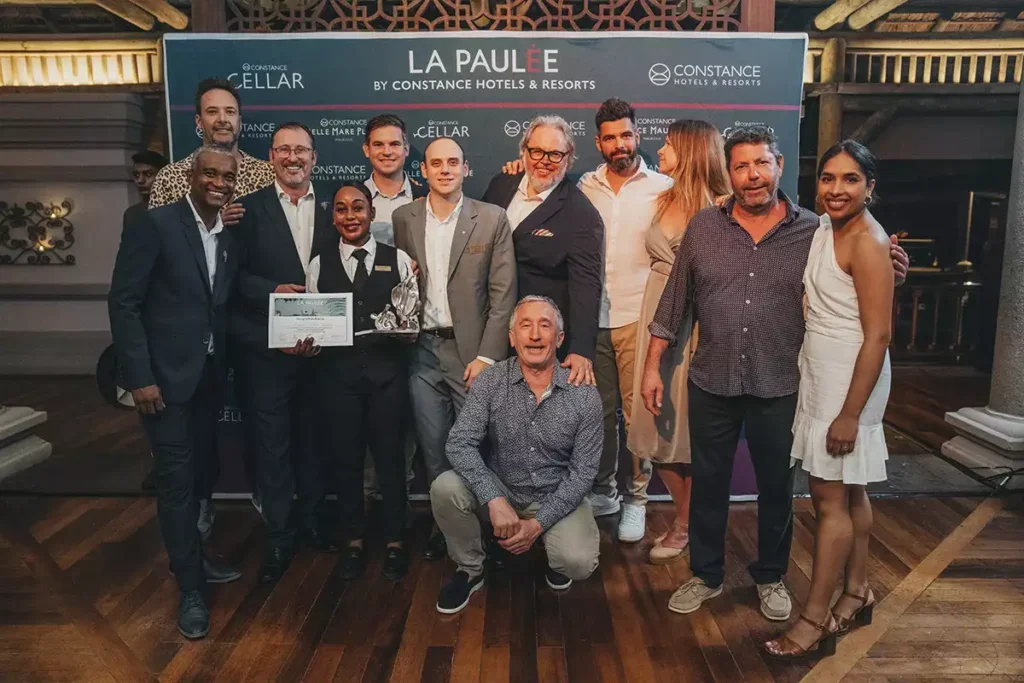
So, what is the secret to a perfect macaron? “It’s a feeling,” he says. “The biscuit itself is simple. We just have to respect the temperature of the sugar. Italian meringue is best, with no air in the mixture, so the biscuit stays strong, but delicate. Sandwich it with a nice ganache filling and leave it in the fridge for 24 hours for the biscuit to acquire the perfect level of moisture—not too soft or rich. Ladurée have humidifiers in the fridges to speed the process, but we make only 300 macarons a week.” Clearly, I’d had more than my fair share… my favorite being vanilla sandwiched with passion fruit and chocolate. It turns out that this is a mirador, adapted from the classic pastry by renowned pastry chef Pierre Hermé, who visits Le Prince Maurice annually for the food festival week. We agree that demi-sec Champagne is the best accompaniment for macarons.
Klein Constantia (South Africa)
Most wine lovers are likely to have encountered the historic South African sweet wine, Vin de Constance. A magnum of the 2019 made an appearance at the paulée, with a chocolate, coconut, and tapioca desert—the finale of a dinner produced by guest chef Jorg Bruch, who ran the Red Bull Hanger-7 Restaurant Ikarus in Salzburg.
Klein Constantia’s very personable estate manager and winemaker, Matthew Day, was on hand to tutor the sommeliers during the week, grabbing their attention with the £60,000 auction price of the 1821 vintage. Matt tells us that the 1791 still tastes good. The production of this sweet wine, mentioned by Dickens and Austen, ceased in 1875 for reasons that included the difficulty of finding vineyard labor following the abolition of slavery, as well as the ever-present threat of oidium and free-trade agreements that undermined the market. But it was resurrected in 1986. Come 2011, the Jooste family sold Klein Constantia to Czech businessman Zdenek Bakala and Charles Harman from the UK, whereupon a 25-year-old intern—Matt Day—was given a shot at making the wine. He grabbed it, and the rest is history. He is widely recognized as having taken Vin de Constance to the next level.
It’s made from Muscat de Frontignan, which has thick skin resilient to oidium and botrytis. A staggering 28 passes are made though the vineyard to collect perfect bunches of 50% raisined berries. “We are trying to make a sweet wine that doesn’t taste sweet,” Matt tells us. With 165g/l residual sugar, the 2019 is super-sweet, but what matters is the balance made with acidity (pH 3.6) and alcohol (14%). The aroma of dried apricot and hazelnuts is intense and complex.
But Klein Constantia has other wines, notably Sauvignon Blanc. Give me a reductive, varietal Sauvignon Blanc—all pyrazines and thiols—and I’ll look for the nearest flowerpot, but Sav Blanc’s assertive personality can be reined in to express terroir, and Matt has made strides in this direction with help of Loire specialist Pascal Jolivet.
The 2018 Metis Sauvignon Blanc 2018, which comes from high-altitude parcels on granite soil, was not settled after pressing and spent 12 months on its gross lees. The resulting wine is both nutty and mineral, with light slate on the finish. Matt informs us that his experience of making Matis was instrumental in going a step further to produce single-vineyard Sauvignon Blanc.
Unfortunately, the single-vineyard wines were still on a ship heading in a leisurely fashion toward Mauritius. They landed as I left, so Matt sent me the 2023 Perdeblokke Sauvignon Blanc to taste at home in London. This comes from a 1.28ha (3.2-acre) block at about 200ft (60m), divided into two parcels facing south and east. These are separately fermented and aged in oak on lees for nine months before blending. The aroma manages to be both tropical and grassy. The full-bodied palate is certainly ripe (14%), but it’s the finish that is most interesting for its mineral grip. The saltiness balances the glycerol richness. Don’t serve it too cold—as it warms up, the savory sapidity is more pronounced. It’s the decomposed granite of Constantia’s soils that gives the savory salinity, Matt explains, while the richness and substance comes from the Table Mountain sandstone.
You can find that same savory minerality in the 2023 Clara Sauvignon Blanc—a blend and barrel-selection from six of the most highly performing blocks from granite soil at an attitude of 850–1,000ft (260–300m). The touch of passionfruit falls away to reveal a polished graphite core in this rich Sauvignon Blanc, which slides elegantly across the palate.
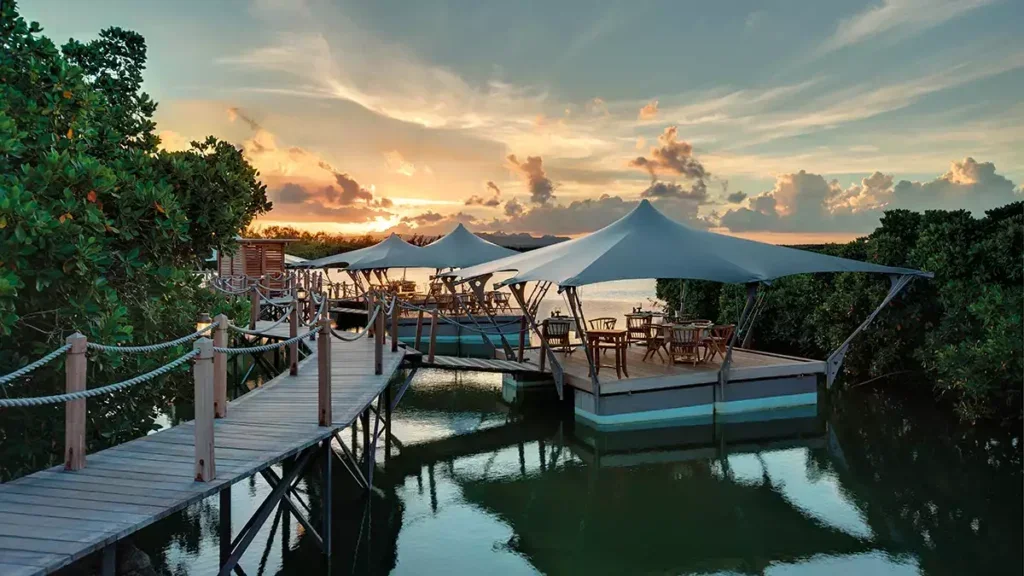
Crystallum and Gabrielskloof (South Africa)
In my conversation with Jérôme Faure, he emphasized the importance of South African wine for the Constance hotels here: “Guests expect this. They see Mauritius as part of Africa.”
Hence South African Peter-Allan Finlayson was present en famille, representing Crystallum, which he established in Hemel-en-Aarde with his brother in 2007. “My family are good at setting up winery brands, but not good at holding on to them,” he added ruefully. His grandfather lost the farm he had established with the proceeds of an antivenom and his father followed suit by losing Bouchard Finlayson.
Peter-Allan has a firm grip on things, however, not least the winemaking. The 2022 Crystallum Agnes Chardonnay, a blend of five vineyards aged in older oak for nine months, shows some restraint. Lightly tropical upfront, becoming more savory, it finishes fresh. Peter-Allan is pursuing a Chablis style. “The alcohol is lower than it used to be. I don’t stir and I use much less sulfur, just one hit after eight months, and it has full malo.”
While many producers will inoculate, Peter-Allan relies, as far as possible, on spontaneous fermentation or a pied de cuve “for more complexity.” Unfortunately, his single-vineyard Pinot Noir were also stuck on the water, but we tasted the 2022 Hemel-en-Aarde Ridge Peter Max Pinot Noir. It is sweetly fruity with smooth tannins—a pleasant introduction to Cystallum’s Pinots, which left me curious to try more.
Peter-Allan also manages the extensive Gabrielskloof acquired by his father-in-law. There are attractive wines in the “project range,” for which Peter-Allen experiments with different techniques. The 2023 Amphora Sauvignon Blanc was partnered with a delicious first course of red tuna tataki with grilled sesame seeds and ponzu sauce on the first evening. “I didn’t like Sauvignon Blanc before I met my wife,” he admits, “but my father-in-law planted a lot of it, so now I take much more interest.” He’s successfully taken Sauvignon Blanc away from a reductive style, to something more savory and food-friendly with this wine.
A lively black-fruit and slightly savory 2021 Whole Bunch Syrah also comes from the project range. For this Peter-Allan used 100% whole-bunch which promotes some carbonic notes and attractive green and floral aromas. “I wanted something fresher and spicier,” he remarks. “I think Syrah is the future for South Africa,” he adds. “There are few places that are cool enough for Pinot Noir.”
There are two Bot River Syrahs—one from shale, the other from sandstone—which are part of the “landscape range.” Peter-Allan is very careful with extraction and ferments these in small containers, pushing the cap down by hand. I like the aromatic garden herbs of the Syrah on Shale (2020). The concentrated dark fruit and velvety tannins are nicely balanced with freshness. Tasted at the sommeliers’ tutorial, it seemed more aromatic and livelier than when I had first tasted it three days earlier. Then, it had felt heavier, sweeter, and more chocolatey. Perhaps it was just the tiredness after a sleepless flight from London that made it taste so different on that first night, but I was also reminded of Jérôme’s comments about atmospheric pressure and its effect on wine—it had indeed rained and the air had become fresher since I arrived.
The paulée
The paulée evening on the Archipel Beach Deck was very jolly. Magnums of wines for drinking and auctioning were paraded on the shoulders of eager sommeliers—Crystallum, to the signature track of James Bond, and Bouvier, to the first Star Wars theme tune. At regular intervals the diners were encouraged to shout out the traditional Burgundian “La, La” drinking song, which they did with enthusiasm, twirling their napkins in the air above their heads. And did I really see Bernard Bouvier moonwalking from the restaurant toward the cellar?
Albeit smaller than Blue Penny, the cellar at Prince Maurice is amply stocked with 2,000 references. And it was to here that we repaired after dining during the week for magnums of older Deutz Vintage Champagne, inter alia. This after-dinner tasting is an ad hoc but frequent event and open to any guest—the only requirement is to buy a bottle from the wine list, at a 30% reduction, to share with whomever is present.
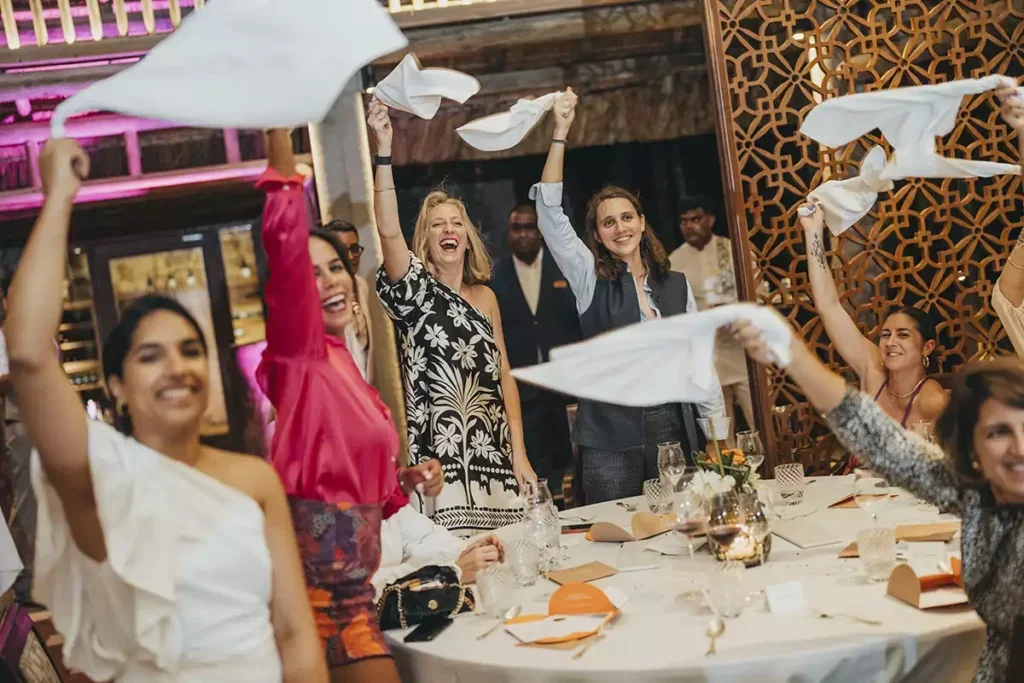
Jérôme is a gregarious and generous host, opening bottles at his own expense. Ballast was provided by smelly cheeses and, on one evening, by Scheiterhaufen, an Austrian pudding baked and served up with gusto by Bernard Ott. On the night of the paulée, macarons were hoovered down by the dozen by a boisterous crowd who also consumed many a good bottle before dispersing around 3am.
On the final day, we lounged like lotus eaters, my media colleagues and I, replete with food and wine. The articles I had intended to write were still unwritten. It was clearly time to leave Mauritius, delightful as the experience had been, and return to the real world. My next assignment: Gorgona, off the coast of Tuscany… another island but one with a rather different guest profile.

